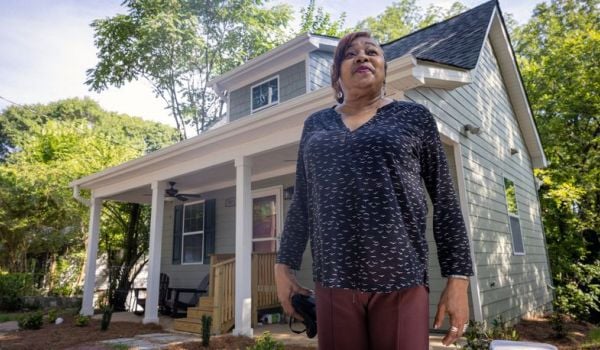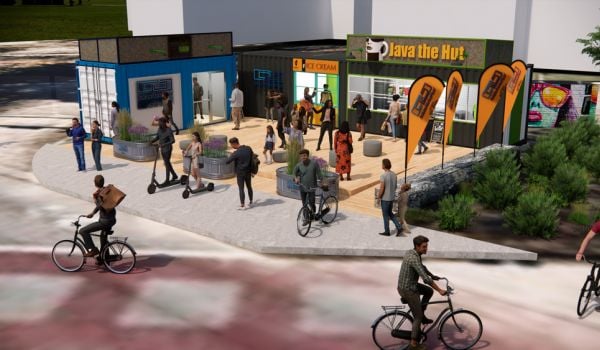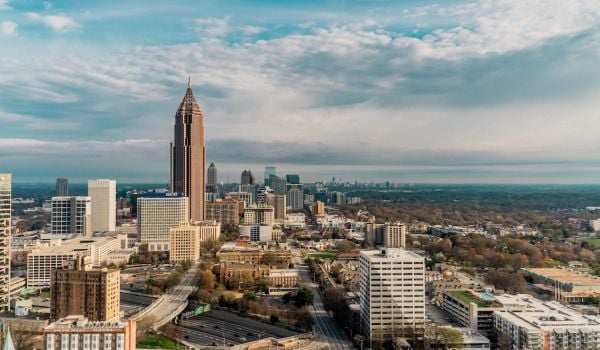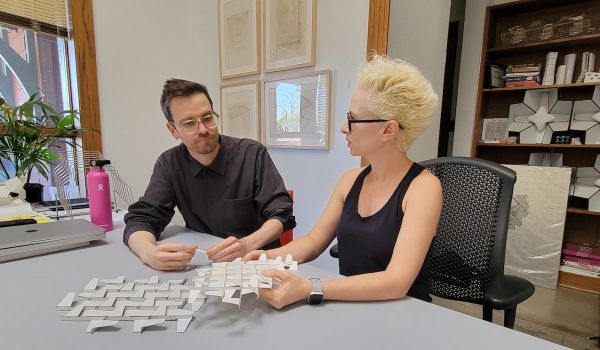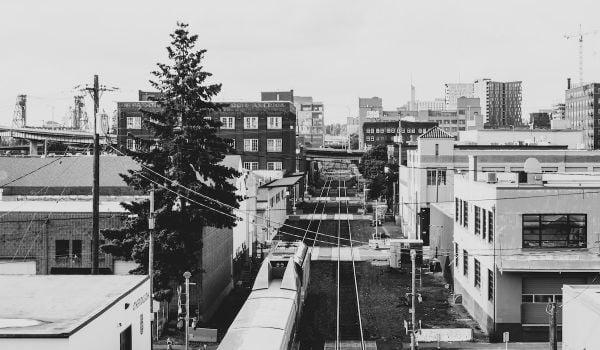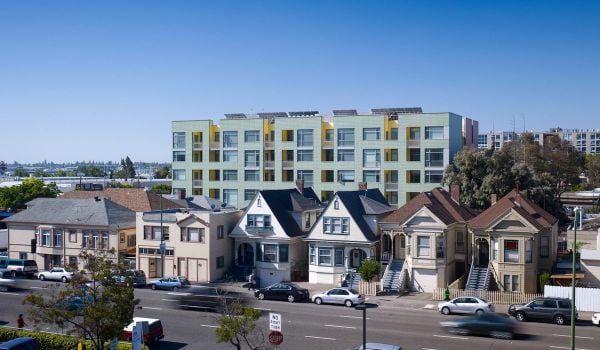In Dunwoody, Georgia., a high-income suburb north of Atlanta, you can’t escape construction. Another tower on the State Farm Insurance Company’s massive corporate campus is going up in Dunwoody’s business core, known as Perimeter Center. Nearby, next to a perennially crowded mall, an office tower that will eventually be 16 stories has sprung up in a former parking lot. News of upcoming hotels and residential buildings is commonplace.
But residents and commuters won’t see as much construction break ground in Dunwoody for a while. That’s because in late November 2018, the city passed a six-month moratorium on multi-unit building applications and permits.
The reason? Timber.
Back in 2014, after consulting with building and fire safety experts, Dunwoody passed an ordinance requiring office and residential buildings more than three stories high to be built with concrete and steel, not wood. Other suburban cities around Atlanta had similar ordinances.
“We had development that was moving very fast and because of the density, I believed it to be an unsafe situation,” says Terry Nall, at-large member of Dunwoody City Council, who advocated for the ordinance.
Georgia’s forest industry, the second largest industry in the state, relies on timber production and its use in construction. Ordinances impeding that grabbed the industry’s attention.
“We felt that it was unfairly discriminating against products that we produce here in the state,” says Andres Villegas, president and CEO of the Georgia Forestry Association. “Lumber is just as safe as steel or concrete when it’s used correctly.”
The issue entered the Georgia legislature in the form of house bill 876, which prohibits localities from banning the use of wood products in construction if state codes are otherwise met. The bill’s opponents came from urban areas, while chief proponents came from rural, more agricultural-dependent areas of the state.
One state senator who supported the bill said materials such as steel aren’t always safer than wood. “The ark was built out of wood,” he said at the time. “The Titanic was built out of steel.”
The bill passed and though some cities got together to discuss ways to halt it, it took effect as law in July 2018, nullifying ordinances that prohibited timber high-rises.
This all comes as wooden high-rises make a comeback worldwide after more than a century of concrete and steel reigning supreme. Cross-laminated timber, a wood product made of crosswise layers of lumber, is stronger than typical light-frame wood such as 2x8-inch boards. That has made it an increasingly popular option for tall buildings.
In 2018, Oregon, which wants to revive its stagnant timber industry, became the first state to allow wooden buildings higher than six stories.
Experts disagree about cross-laminated timber. Last month, the International Code Council, an advisory firm that develops the International Building Code, approved the use of mass timber in buildings up to 18 stories. But the National Association of State Fire Marshals says cross-laminated timber requires more testing.
Steve Skalko, whose specializes in building fire protection, says these contemporary wooden buildings stir up fears of the fires that made headlines in the 19th century. (Skalko spoke at a press conference organized against the Georgia law before it was passed.)
“We’ve started seeing these bigger wood frame buildings, and I think there’s been some concern on the part of some local governments,” says Skalko, consulting engineer at Skalko PE & Associates in Macon, Georgia. Governments wonder “if we put large, large buildings of combustible materials closely spaced, are we going to create problems like we used to have in the early 1900s?”
That is Dunwoody’s concern as it embarks on its construction moratorium. Nall says those six months give the city time to consult the county fire marshal before allowing more development. “It gives us a breather to step back and say here are some things that we can do based on the advice of the fire professionals,” Nall says.
Skalko says heavy timber such as cross-laminated timber has fire resistance that compares to concrete or steel, though cross-laminated timber still has a higher “fire load” — a measurement of how much material is available to burn.
He says there is also a risk of fire spreading in a high-density place that has multiple buildings made of cross-laminated timber.
“If we start putting a whole bunch of them close to each other, to my way of thinking, we’ve changed the physical characteristics of that concentrated environment of commercial buildings because now instead of all of them mostly being steel and concrete and glass exteriors and what have you, they start to be heavy wood and glass close to each other,” Skalko says. “If you built a single building out in the middle of a field somewhere not near anything, the risk that it has is far different than the risk it has if you have it sitting next to four other buildings just like it.”
Villegas says cities who want to ban wooden high-rises are more concerned with slowing down development than with safety. Multifamily developers tend to favor lumber because it’s cheaper, he says.
“It has nothing to do with safety. It has everything to do with creating communities the way and the manner that they want to shape them,” Villegas says. “That has to do with traffic. That has to do with who moves in. That has to do with affordable housing. It has to do with a lot of things.”
Dunwoody — which lacks affordable housing — is creating a taskforce to study workforce and affordable housing despite opposition from the mayor and some City Council members, including Nall.
Nall says the Georgia timber law ignores places with higher density.
“The legislature is trying to make one code apply all across the state, whether you’re a very dense area or a very sparsely populated area, and I don’t think that makes sense,” he says. “When you’re in a dense area, you need a tighter fire safety code to apply and that does impact the building code, but the legislature has really tied our hands.”
For now, as the city experiences economic and job growth, there will be fewer construction cranes in Dunwoody.
And questions linger as cross-laminated timber remains popular around the world. Skalko says long-term ramifications such as fire safety need to be studied.
“We still need to kind of watch this thing carefully,” he says. “I’m not certain we have all the answers yet.”

Adina Solomon is a freelance journalist based in Atlanta. She writes on a range of topics with specialties in city design, business and death. Her work has appeared in The Washington Post, CityLab, U.S. News & World Report, and other national and local outlets.



